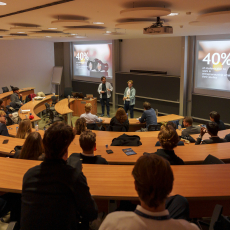Only last year, many workers around the world were retrenched or were worried about losing jobs. But those fears appear to have been overturned.
A survey conducted by the Achievers Workforce Institute in the US and Canada indicated that more than 52 per cent of employees intended to look for a new job in 2021. A Monster.com report revealed a strikingly high level of 95 per cent of workers were considering a new job.
In Singapore, a Michael Page Talent Trends report found that 56 per cent of the employed are expecting to find a new job in 2021.
This figure is higher than the 31 per cent of employees in Singapore who were intending to find a new job between April and October 2020, based on a Randstad survey. This is despite the economy seeing a 2 per cent contraction in the second quarter as restrictions were tightened.
Work-life balance
Before the pandemic, the top factors typically driving employees away were compensation and benefits, job security, and growth opportunities. According to the survey done by the Society of Human Resource Management in 2017, the top five factors of employees leaving their organization are Compensation (56%), Benefits (29%), Job Security (25%), Career advancement opportunities (21%), and Flexibility to balance work and life (18%). In the meantime, the top contributors to employee job satisfaction are the respectful treatment of employees (65%), overall compensation (61%), and trust between employees and senior m management (61%). However, the survey showed employees were only satisfied at 38%, 26%, and 33%, respectively. Clearly, prior to the pandemic, the relationship with the leaders is an area to work on to raise employee satisfaction. According to the Gallup survey data, employees who are satisfied and engaged are 87% less likely to quit their current company.
These top factors haven’t changed much, but employees’ expectations of their bosses and companies have hiked, because of pent up job switches that did not happen and pandemic-driven epiphanies of what truly matters to them.
According to the Michael Page survey, the top 3 reasons for non-managerial level employees to leave are pay and benefits, growth opportunities, and skills underutilised. For middle management, the teething factors are growth opportunities, pay and benefits, and employees’ well-being. For the director/VP level, key concerns are growth opportunities, change in leadership, and lack of transparency in leadership communications. 90% of the respondents said there is room for improvement in the areas of employee experience such as transparent leadership communication, professional development, and work process. Such lists of expectations can be extensive but have generally moved beyond work to centre on the balance between work, life and purpose. The concerns for well-being and transparent leadership communication are surfaced during the pandemic.
As people worked from home during the pandemic, their resilience levels were tested. Some employees were retrenched, while others experienced the pain of losing their loved ones and separation from their families during COVID-19. Employees have faced personal challenges during this period, such as work-life imbalance and life uncertainty. The Michael Page survey revealed that 51% of companies in Asia Pacific re-established the performance metric and placed more value on employee attributes such as collaboration (64%), resilience (61%), and agility (56%).
Remote work has also caused many to burn out due to longer working hours in front of the computer, heavier workloads, endless Zoom meetings and conference calls, and myriad other new responsibilities as the daily norm. Mental and emotional wellbeing has become one of the most important topics that need to be addressed in many companies. Based on the Microsoft Work Trend Survey, 55% of respondents indicated they were overworked whereas 39% felt exhausted.
How employers address mental wellbeing issues reveal how they care for employees, the relationship between leaders and employees, and underscores a deeper picture of the overall company culture.
For example, how did leaders handle retrenchment during this period? When employees were forced to leave, did their leaders treat them with respect and dignity?
Many leaders know when and how to welcome new hires but do not hesitate enough over sending people away. When employees suffered while working from home in isolation, did their leaders do anything to help?
Poor relationships with leaders are a key reason why employees resign, and COVID-19 has made this issue even more visible and apparent. The Michael Page survey found that 9 in 10 employees said their leaders have communicated with them during the pandemic crisis, but many felt the top management lack sincerity in delivering their messages nor did they understand or care about what their employees have been encountered or suffered in the crisis.
As a leader, it is not only about ensuring hygiene factors, like making sure employees have the technology-related tools to work efficiently at home but the human touch, in supporting staff during this tumultuous period. The typical example would be companies that just run the regular engagement survey but didn’t find ways to address the pain points. However, there are some companies that try to address the struggling issues faced by their employees. One such example would be from DBS where the bank’s management team encourage positive change initiatives from their staff and think together to find innovative solutions to help those workers being impacted by the pandemic. For example, the bank helped the limousine driver who served for DBS Asia Treasurers ferrying VIP clients before the pandemic to find a new purpose of work to deliver meals to the household in need.
Jobs and skills
In Singapore specifically, with the wide accessibility of free online learning courses and government subsidies, people have been levelled up, especially in areas such as individual digital literacy and aptitude in data analysis, and making themselves more marketable and suitable for a wider range of roles. As indicated by SkillsFuture Singapore, 540,000 Singaporeans benefited from its programs during 2020 which was 40,000 up from 2019, and employees took up courses in the areas of data analytics, digital commerce and customer service, and soft skills in communication and change.
The top five emerging jobs in Singapore reported by LinkedIn Talent Solutions are all related to data analytics, design, cybersecurity, and digital industries.
The time spent at home during this period has also allowed employees, many of whom have been simply sheltering in their roles, to reflect more deeply on their careers and if they are in the right jobs.
Moreover, with the economy showing glimpses of recovery, new jobs are creeping up too. The total level of employment in Singapore during the first quarter of 2021 turned positive for the first time since the pandemic. According to a Michael Page survey, 40 per cent of employers reported increasing their headcount in Singapore in 2021.
What can employers do?
According to a recent Mercer 2020 Global Talent Trends Study, only 11 per cent of human resources (HR) teams in Singapore provided an extremely good employee experience last year.
Those companies with HR that use this opportunity to reimagine work-from-home policies will do better in attracting talent. According to a McKinsey report, hybrid remote work will continue with 20 per cent to 25 per cent of workers in advanced economies working from home for three to five days per week.
Companies such as Twitter have promised that working from home will be a permanent option, but many others couldn’t wait to welcome their employees back into the office, claiming there are benefits of being physically present in the office. Some in Singapore even flouted safe distancing rules to bring their employees back before it was allowed.
At a time when an Iceland study on the four-day workweek has sparked excitement over a potentially new paradigm for work, employers must rethink work itself and to what extent flexibility can be an element in the job design itself.
Japan, Spain, and many other countries are following through with certain levels of experimentation in this respect.
The good news based on the Mercer 2020 survey is that 45 per cent of Singapore companies plan to reinvent flexibility in 2021, followed by learning ecosystem (44 per cent) and upskilling or reskilling their talents (41 per cent).
The second important step is to listen to what your employees want. Companies have conducted engagement surveys and exit interviews every year – however, many fail to take follow-up actions. The Achievers Workforce Institute report found 60% of employers have collected feedback from their employees about how to improve employee experience, however, only 34% of employees felt their employers have taken some sort of actions while 18% of employees said their employers did nothing or handled the work process poorly. The McKinsey report said the leaders failed to understand their own people. In a similar vein, the Michael Page survey found there is a significant gap in between how the employees and employees perceived workplace empathy where 60% of the employers rated the level of empathy increased now compared to pre-pandemic whereas only 36% of employees said so.
To reimagine employee experience, it is important to listen, share, discover, and provide feedback to your employees.
Communicate with your employees, identify constraints and potential, act on them, and revise your processes. If you talk and listen to your employees, you will get to know your workers better and will learn how to better design experiences for them, including growth opportunities and fleshing out a learning ecosystem. You also won’t be surprised when someone submits a letter of resignation.
According to the McKinsey report on the future of work after COVID-19, social and emotional skills, as well as technological skills, are core skills to acquire for employees in the highest two wage quintiles.
A third important step is to recognise your employees’ achievements beyond compensation and benefits. Many employers have asked: “Why when we offer beyond market salaries, are our employees still leaving?”
Sometimes, it is just a simple and sincere visible gesture that employees can see, feel, and remember, that makes a difference. How to demonstrate recognition is highly related to a leader’s social and emotional skills too.
The path ahead may or may not see people quitting en masse. People can talk tough in surveys only to proceed more cautiously in taking action.
But we are in a peak hiring period where annual performance bonuses and any increments would have been dished out.
So in a tight labour market like Singapore’s where competition for talent is stiff, perhaps it’s time for employers to reimagine the possible learning journeys they might make with their employees, together.
The article is an abridged version of the one first published on CNA





